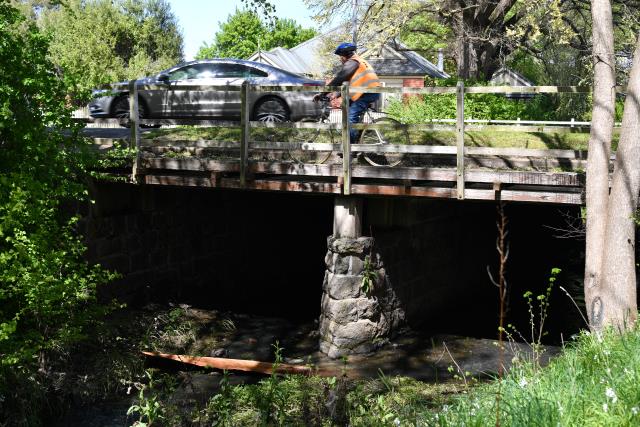Elsie Lange
Macedon Ranges council has expressed its disappointment that the removal of Bunjil Creek Bridge in Gisborne has commenced.
The 148-year-old bluestone bridge is being removed as part of the installation of a roundabout at the intersection of Melbourne and Kilmore roads, despite council’s push to have it heritage-listed.
“Despite efforts to protect the historic bridge and a number of trees through expert heritage advice and strong local community backing, the Minister for Planning has not supported council’s request for interim heritage protection based on the heritage values of the bluestone bridge,” Macedon Ranges mayor Jennifer Anderson said.
“Whilst council understands the importance of improving our shire’s key intersections and bridges, and investments by the Victorian government to support this, we strongly felt this did not need to come at the expense of protecting a significant heritage structure.”
Macedon MP Mary-Thomas said she understood locals were “passionate” about Gisborne’s heritage, which is why they would ensure bluestone removed from the bridge is treated carefully and re-used on the project.
“Our engineers have worked with the Macedon Ranges Shire council every step of the way, exploring all options to retain the existing Bunjil Creek Bridge, including a bridge over bridge design,” Ms Thomas said.
“Melbourne Water advised the Department of Transport that the proposed bridge over bridge option was not acceptable as it increased the flood impact on residential properties – a fact the department made clear to council some time ago.”
It is understood a photographic inventory of the bluestone blocks will be prepared, outlining dimensions, the number of blocks and suitability for their reuse.
But Cr Anderson said the removal of the bridge would be a loss.
“Once our heritage assets are removed, no plaque can adequately demonstrate their historical relevance, heritage importance, nor the artisanship to build these reminders of our past,” Cr Anderson said.
“Once they’re gone, they’re gone forever.”







